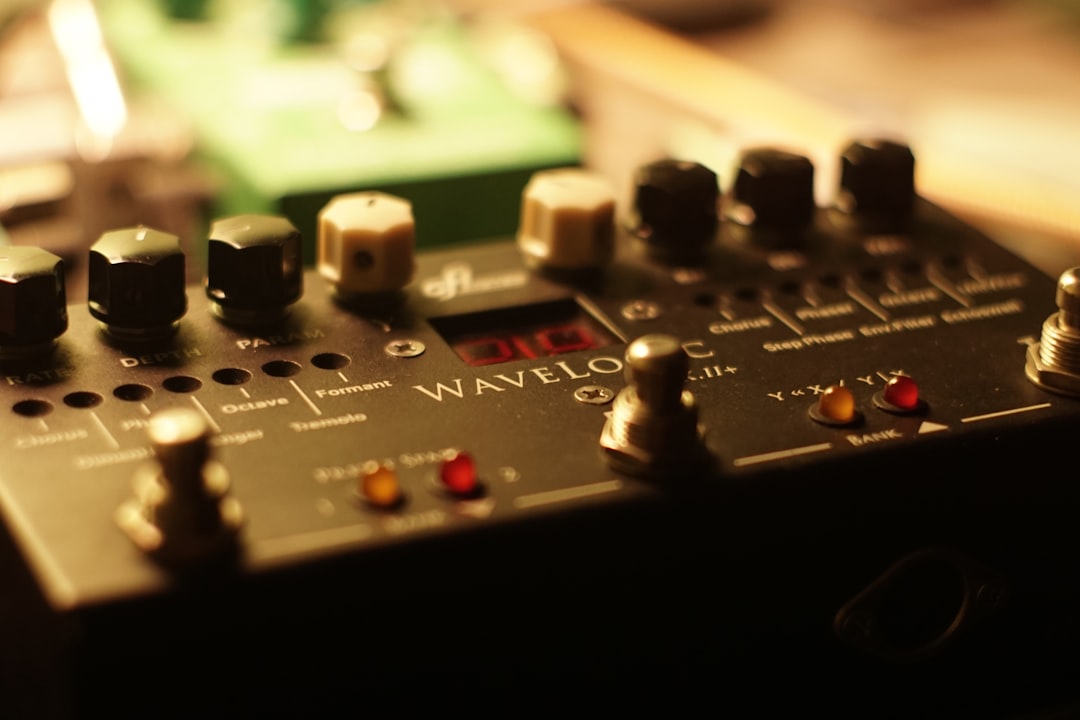The music industry has undergone a seismic shift in recent years, driven by technological advancements and changing consumer behaviors. Gone are the days when traditional marketing methods, such as radio play and physical album sales, dominated the landscape. Today, the industry is characterized by a complex web of digital platforms, social media channels, and streaming services that have transformed how artists connect with their audiences.
This evolution has created a dynamic environment where marketing strategies must be agile and innovative to keep pace with the rapid changes in consumer preferences. Understanding this landscape is crucial for anyone looking to carve out a career in music industry marketing, as it requires a keen awareness of both the artistic and commercial aspects of the business. Moreover, the rise of independent artists and DIY musicians has further complicated the marketing landscape.
With the democratization of music distribution through platforms like Spotify, Apple Music, and Bandcamp, artists now have unprecedented access to global audiences. However, this accessibility also means that competition is fiercer than ever. As a result, effective marketing in the music industry now hinges on a deep understanding of audience segmentation, data analytics, and targeted promotional strategies.
Marketers must not only be adept at crafting compelling narratives around artists and their music but also possess the analytical skills to measure the impact of their campaigns. This dual focus on creativity and data-driven decision-making is essential for navigating the complexities of today’s music marketing environment.
Key Takeaways
- The music industry marketing landscape is diverse and constantly evolving, requiring professionals to stay updated on trends and strategies.
- Job opportunities in music industry marketing range from artist management and promotion to digital marketing and branding.
- Skills and qualifications needed for music industry marketing jobs include a strong understanding of music trends, excellent communication skills, and a creative mindset.
- Networking and building relationships with industry professionals is crucial for success in music industry marketing.
- Digital marketing strategies such as social media promotion and influencer partnerships are essential for reaching and engaging with music audiences.
Exploring Different Marketing Job Opportunities in the Music Industry
The music industry offers a diverse array of marketing job opportunities that cater to various skill sets and interests. From traditional roles such as public relations specialists and brand managers to more contemporary positions like social media strategists and digital content creators, there is no shortage of avenues for aspiring marketers. Public relations specialists play a pivotal role in shaping an artist’s public image, crafting press releases, and managing media relations to ensure that their clients receive positive coverage.
On the other hand, brand managers focus on developing and maintaining an artist’s brand identity, ensuring that all marketing efforts align with the artist’s vision and values. In addition to these traditional roles, the rise of digital marketing has given birth to new job titles that reflect the industry’s evolving needs. Social media managers are now essential for engaging fans on platforms like Instagram, TikTok, and Twitter, creating content that resonates with audiences while driving engagement and building community.
Similarly, data analysts are becoming increasingly important as they help record labels and artists understand listener behavior through metrics and analytics. This data-driven approach allows marketers to tailor their strategies more effectively, ensuring that promotional efforts yield maximum results. As the music industry continues to evolve, so too will the job opportunities available, making it an exciting time for those looking to enter this vibrant field.
Navigating the Skills and Qualifications Needed for Music Industry Marketing Jobs

To thrive in music industry marketing roles, candidates must possess a unique blend of skills that encompass both creative thinking and analytical prowess. Strong communication skills are paramount; marketers must be able to articulate their ideas clearly and persuasively, whether they are crafting a press release or pitching a campaign to stakeholders. Additionally, creativity is essential for developing innovative marketing strategies that capture the attention of audiences in an oversaturated market.
This often involves thinking outside the box and finding new ways to present an artist’s work in a compelling manner that resonates with fans. Beyond these foundational skills, familiarity with digital marketing tools and platforms is increasingly important in today’s landscape. Proficiency in social media management tools, email marketing software, and content creation applications can set candidates apart from their peers.
Furthermore, an understanding of data analytics is becoming indispensable; marketers must be able to interpret metrics from campaigns to assess their effectiveness and make informed decisions moving forward. While formal education in marketing or communications can provide a solid foundation, hands-on experience through internships or volunteer opportunities can be equally valuable in building a competitive skill set tailored for the music industry.
Networking and Building Relationships in the Music Industry Marketing Field
In an industry as interconnected as music, networking is not just beneficial; it is essential for career advancement. Building relationships with industry professionals can open doors to job opportunities, collaborations, and mentorships that might otherwise remain inaccessible. Attending industry events such as concerts, festivals, and conferences provides invaluable opportunities to meet key players in the field.
Engaging with fellow attendees and speakers can lead to meaningful connections that may prove advantageous down the line. Additionally, joining professional organizations or online communities dedicated to music marketing can further expand one’s network while providing access to resources and insights from experienced professionals. Moreover, nurturing these relationships requires ongoing effort and genuine engagement.
It is not enough to simply collect business cards; successful networking involves maintaining contact and offering support where possible. This could mean sharing relevant articles with contacts, congratulating them on their achievements, or even collaborating on projects that align with mutual interests. By fostering a sense of community within the industry, marketers can create a robust support system that not only aids in personal career growth but also contributes to the overall health of the music ecosystem.
In an industry where reputation often precedes opportunity, investing time in building authentic relationships can yield significant long-term benefits.
Leveraging Digital Marketing Strategies in the Music Industry
Digital marketing has become a cornerstone of successful music promotion strategies in recent years. With millions of songs available at listeners’ fingertips through streaming platforms, artists must leverage digital tools effectively to stand out from the crowd. Social media platforms like Instagram, TikTok, and YouTube have emerged as powerful channels for artists to connect with fans directly, share behind-the-scenes content, and promote new releases.
Marketers must be adept at creating engaging content tailored to each platform’s unique audience while also utilizing paid advertising options to amplify reach. The ability to craft visually appealing posts or viral videos can significantly enhance an artist’s visibility and engagement levels. In addition to social media marketing, email campaigns remain a vital tool for maintaining direct communication with fans.
Building an email list allows artists to share exclusive content, announce new releases or tours, and foster a sense of community among their supporters. Marketers should focus on creating compelling newsletters that not only inform but also entertain subscribers. Furthermore, utilizing data analytics tools can help track engagement metrics from both social media and email campaigns, providing insights into what resonates with audiences.
By continuously refining their digital marketing strategies based on these insights, marketers can ensure that their efforts remain relevant and impactful in an ever-evolving landscape.
Balancing Creativity and Business Acumen in Music Industry Marketing Roles

In the realm of music industry marketing, striking a balance between creativity and business acumen is crucial for success. While innovative ideas are essential for capturing audience attention and generating buzz around an artist or project, these ideas must also align with broader business objectives. Marketers need to understand market trends, consumer behavior, and financial implications when developing campaigns.
This requires not only creative thinking but also strategic planning skills that enable marketers to set measurable goals and assess campaign performance against those objectives. Moreover, collaboration with other departments within a record label or management team is often necessary to ensure that marketing efforts are cohesive and aligned with overall business strategies. For instance, working closely with sales teams can provide insights into what types of promotions drive revenue while collaborating with A&R teams can help marketers understand an artist’s vision more deeply.
This cross-functional collaboration fosters an environment where creativity can flourish within a framework of business strategy, ultimately leading to more effective marketing campaigns that resonate with audiences while achieving commercial success.
Tips for Landing and Succeeding in a Music Industry Marketing Job
For those aspiring to break into music industry marketing, several strategies can enhance their chances of landing a position in this competitive field. First and foremost, gaining relevant experience through internships or volunteer opportunities is invaluable. Many record labels, artist management firms, or music festivals offer internships that provide hands-on experience in various aspects of marketing.
These experiences not only build essential skills but also allow candidates to make connections within the industry that could lead to future job opportunities. Once in a position within the music industry, continuous learning is key to long-term success. The landscape is constantly evolving due to technological advancements and shifting consumer preferences; staying informed about emerging trends will help marketers remain relevant.
Engaging in professional development through workshops, online courses, or industry conferences can provide fresh insights and skills that enhance one’s effectiveness in their role. Additionally, cultivating a personal brand through social media or a professional website can showcase expertise and passion for music marketing—qualities that are highly valued by employers in this dynamic field. By combining experience with ongoing education and personal branding efforts, aspiring marketers can position themselves for success in the ever-changing world of music industry marketing.
FAQs
What are marketing jobs in the music industry?
Marketing jobs in the music industry involve promoting and selling music, concerts, and related products. This can include roles in digital marketing, social media management, public relations, and advertising.
What are the responsibilities of a marketing professional in the music industry?
Marketing professionals in the music industry are responsible for creating and implementing marketing strategies to promote artists, albums, and events. This can involve managing social media accounts, coordinating advertising campaigns, and building relationships with media outlets.
What skills are required for a marketing job in the music industry?
Skills required for a marketing job in the music industry include strong communication and interpersonal skills, creativity, knowledge of digital marketing tools and platforms, and a passion for music and the music industry.
What are the career prospects for marketing professionals in the music industry?
Marketing professionals in the music industry can advance to higher-level positions such as marketing director, brand manager, or head of marketing. They may also have the opportunity to work with larger and more well-known artists and companies as they gain experience and expertise.
What education and experience are needed for a marketing job in the music industry?
A bachelor’s degree in marketing, communications, or a related field is typically required for a marketing job in the music industry. Experience in marketing, particularly within the music industry, is also highly valued. Internships and entry-level positions can provide valuable experience and networking opportunities.

























